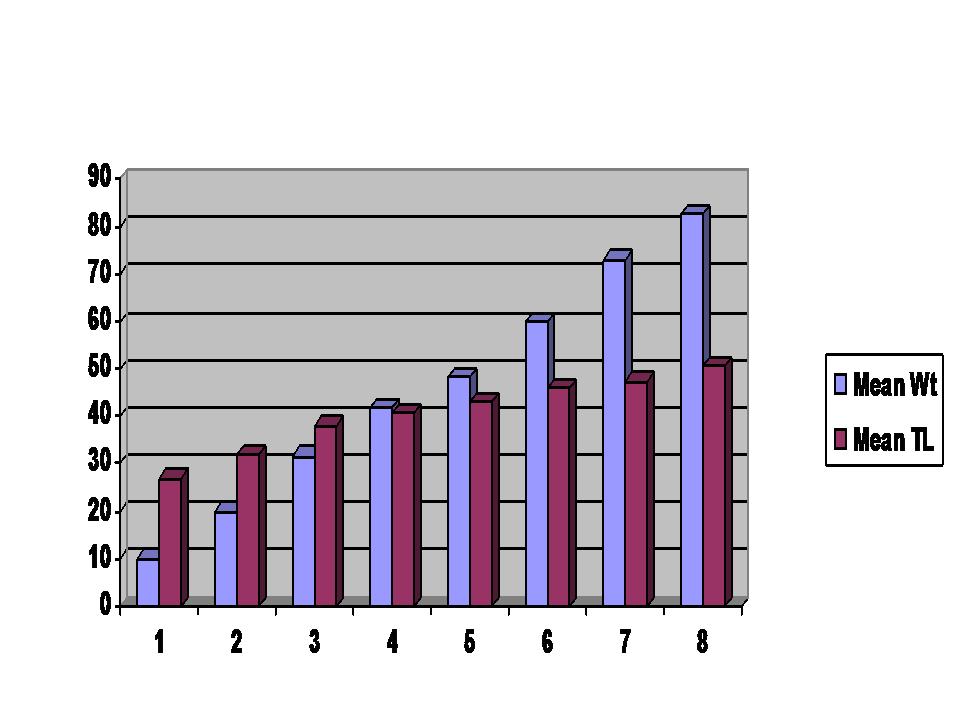


GROWTH AND DEVELOPMENT OF A CLUTCH OF SOUTHERN HOUSE WREN Troglodytes aedon musculus IN ENCARNACIÓN, SOUTHERN PARAGUAY
Paul Smith
The Southern House Wren Troglodytes aedon musculus is a common and familiar inhabitant of urban areas throughout Paraguay (Clay and del Castillo 2004, Smith and Clay in press). Here we present a photographic documentation of the daily development of a clutch of House Wren eggs from an urban garden in Encarnación, Departamento Itapúa, southern Paraguay. This being an isolated documentation of a single nest, the facts are presented without commentary and no attempt is made to draw any broader conclusions.
NEST-BUILDING
On 9 October 2006 an unsexed adult House Wren was seen carrying nesting material into a plastic bag full of electrical cables hanging from a nail in a garage (FIG 1). The bag was leaning against a brick wall, and was protected from the elements by a corrugated iron roof, though semi-exposed to winds from the north and west sides. At this stage the nest was an untidy, rounded unlined cup of small twigs nestled in the middle of the cables, which had been wound into a loop and provided solid support. By November 14th, the sides of the nest had been built up higher and the nest was lined with a dense layer of feathers, some as large as 5cm in length. The majority of the feathers appeared to belong to Columbids (likely Columba livia) and domestic chickens Gallus gallus.
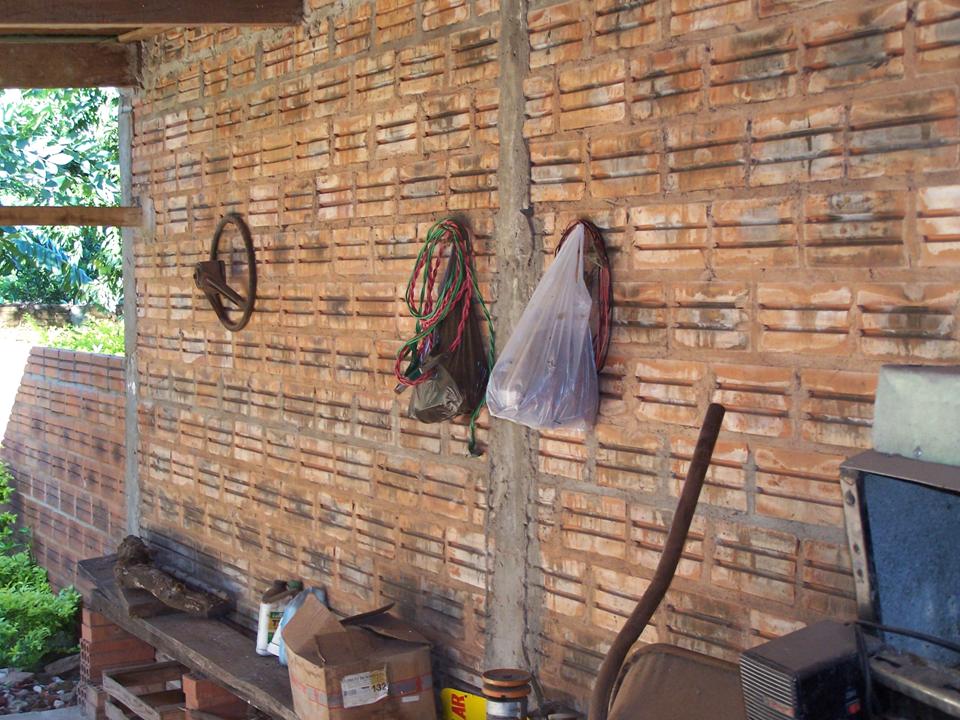
FIG 1: Location of Nest (Photo Paul Smith)
On 16th October a thin piece of sellophane from the wrapper of a cigarette packet was also incorporated. The adults did not roost in the nest.
As early as mid-August the same pair of territorial wrens had been seen engaged in nesting behaviour, stuffing sticks into a variety of cavities within 10m of the area where the nest was eventually constructed - including a electrical fuse box. This habit for filling cavities in order to “claim them” is well-known in US populations of this species and an increase in the wren populations has been blamed for a decline in populations of other hole-nesting species (Adam Betuel pers. comm.).
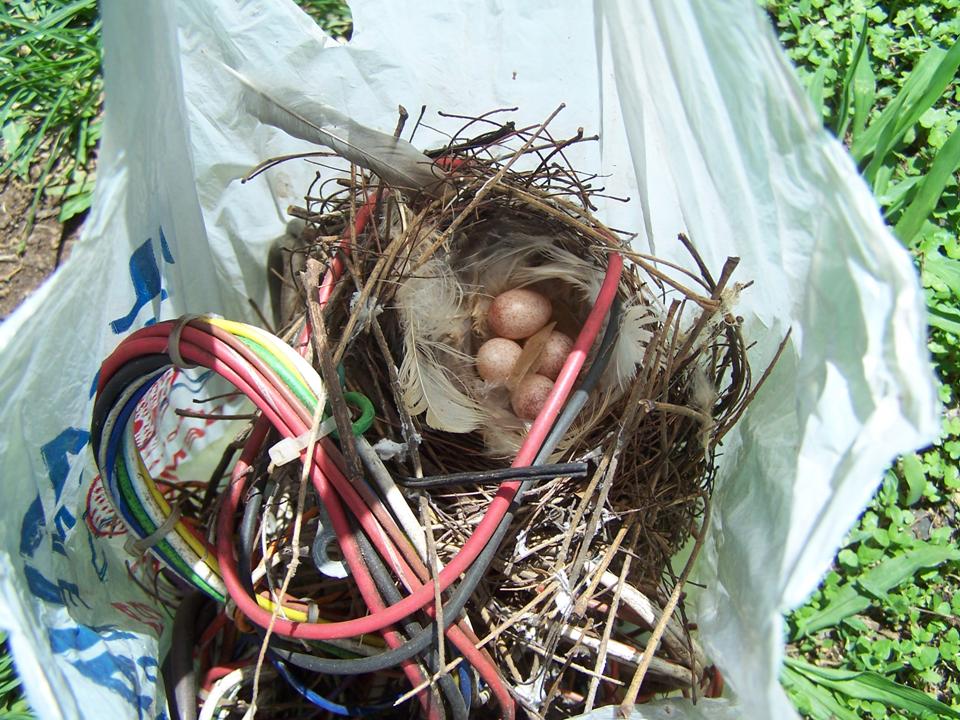
EGGS AND INCUBATION
The first egg was laid on 17th October prior to 10am in the morning. Three more eggs were laid, one each on subsequent days forming a complete clutch of four by 20th October (FIG 2). The nest was checked at 10 am each morning and again just prior to sundown at 6pm each evening. All eggs were laid between the last evening check and the first check the following morning.
The eggs were white with a slight pinkish tinge. They were heavily-mottled throughout with reddish-pink blotches, concentrated to form a “cap” at the obtuse end. On 24th October (four days after the completion of the clutch and seven days after the laying of the first egg) the eggs were measured and weighed and found to have the following dimensions (17-18mm x 13-13.5mm; mean 17.63 x 13.13mm; mode 18 x 13mm).
FIG 2: Nest with complete clutch 20 Nov 06 (Photo Paul Smith)
Two of the eggs had a mass of 1g, and two of 1.5g. The clutch size, dimensions and descriptions of the eggs all closely match those of de la Peña (1987) for nests in Argentina.
Intermittent incubation did not commence until 19th October (when three eggs were present in the nest), but throughout the incubation period the eggs were left unattended for most of the day. Bouts of incubation coincided with a drop in ambient temperature, for example during periods of rain or cold. For the most part during the course of the incubation period ambient temperatures were extremely high (mean >35oC) and, coupled with the insulating effects provided by the plastic bag in which the eggs were placed, the eggs could be maintained at a sufficient temperature to guarantee their development without parental assistance. At night, when ambient temperatures dropped (mean c20 oC) at least one adult bird roosted on the nest, presumably performing incubation duties.
Three of the four eggs hatched some time between 10am and 4.30pm on 2 November, the egg-shells being removed by the parents, the fourth egg hatched between 6pm and 10am the following morning. This gives extreme incubation period estimates of 12-16 days (the lower figure assuming incubation beginning with the last egg, the higher assuming incubation beginning with the first egg.)
GROWTH AND DEVELOPMENT OF NESTLINGS
During the period of nestling growth the nest was checked daily at 4.30pm. Photographs and descriptions of the largest chick and measurements of all young were taken each day. The following abbreviations are used for morphometric data - TL (Total Length of chick in normal sitting position), T (Tarsus), W (Wing), Wt (Mass). Complete morphometric data is presented in Table A.
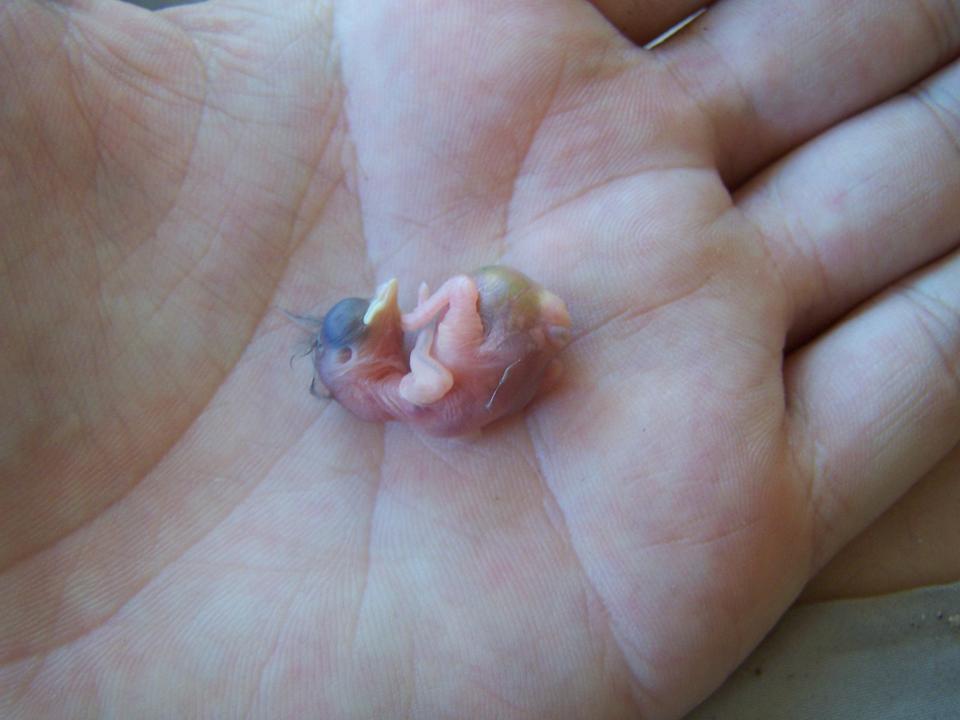
Day 1/ FIG 3: Young are naked and pinkish with closed, blue “split-plum” eyes. The yellow flanges at the gape are prominent. Isolated greyish filoplumes are present on the crown and the ear opening is clearly visible. The chicks are not capable of independent movement, the head is moved with unrestrained, random “swings”. When handled they adopt a “fetal position” with head curled in towards the greatly distended, transparent belly, occasionally moving the wings or feet ineffectually - the feet are held closed in a “claw” position. A slight “nub” is present at the tail. They make no noise. Chicks are being brooded by adult. During the period that the nest was being checked one adult bird remained in close attendance, protesting with loud alarm - a gravelly, repeated “zeeewaaa”. To avoid undue disturbance morphometric data was taken from only the largest chick. TL = 27mm; Wt=1g. (n=1).
FIG 3: Chick on day of hatching. (Photo Paul Smith)
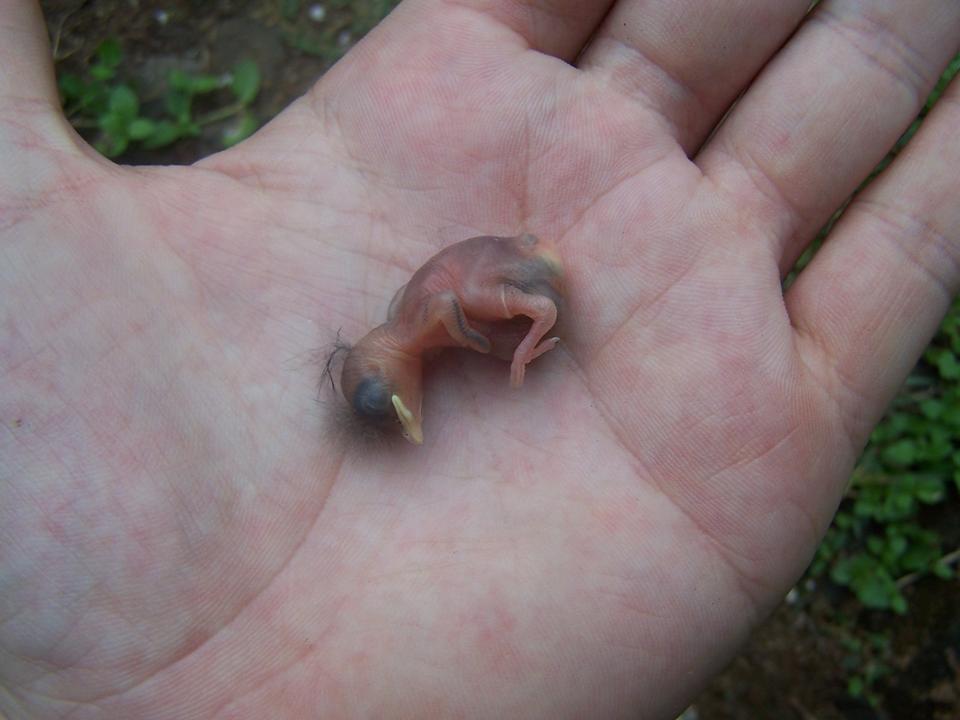
FIG 4: Chick on day 2 after hatching (Photo Paul Smith)
Day 2 / FIG 4: Eyes remain closed, filoplumes slightly longer and also present on nape. Chicks are much more active, can raise the head and move the wings and legs much more when handled, being capable of limited movement. Inside of mouth is yellow. No longer adopting fetal position, the neck is extended when resting. The pin feathers of the alar tract are now visible through the skin. Nail is now present on hindclaw. They make no noise. The feet are now held open in a more natural position. Chicks are not being brooded by adult, despite cloudy conditions. To avoid undue disturbance morphometric data was taken only from the largest chick. TL = 32mm; T=8mm; W=9.5mm; Wt=2g. (n=1).
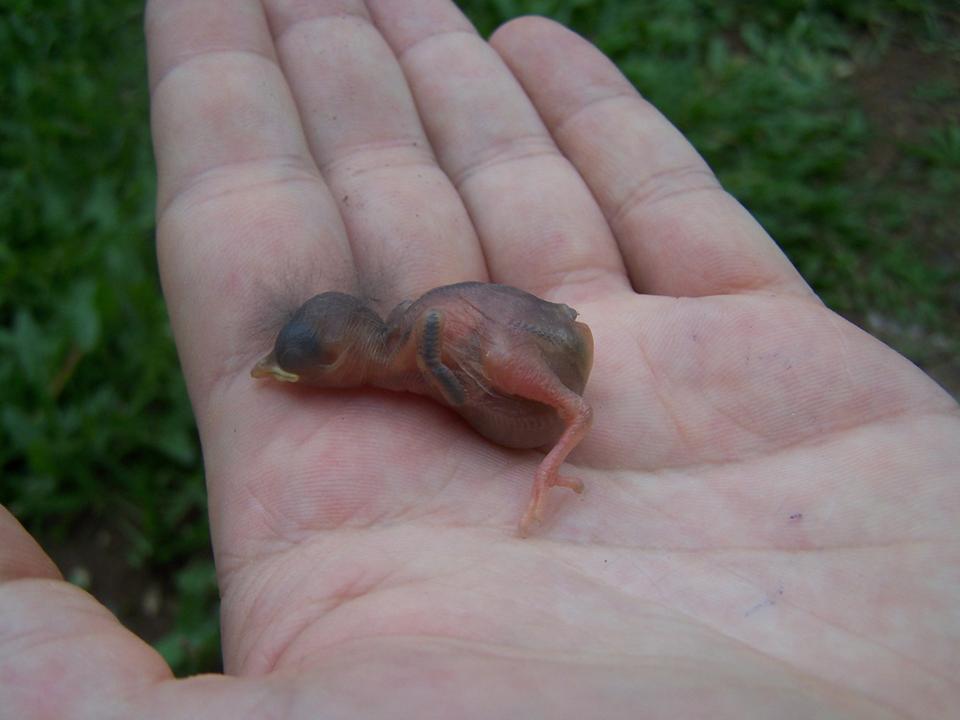
FIG 5: Chick on day 3 after hatching (Photo Paul Smith)
Day 3 / FIG 5: Eyes remain closed. Chicks active, able to use the wings and legs to clamber about. One chick raised head and begged for food when nest was gently rocked. Adults re-construct a "roof" of feathers springing from sides of cup so that chicks are not visible unless the roof is displaced. Crown much darker. Spinal, caudal, ventral and crural tracts are now visible beneath the skin. Alar tract more developed and tips of primary sheaths are beginning to pierce the skin. Nails are present on all four digits. One chick (presumably last to hatch) is a day behind in development with the following measurements TL=33.5mm; T=9mm; W= 9mm; Wt=2.5g (n=1). Mean measurements of other three chicks TL=38mm; T=9.5mm; W=10.67mm; Wt=3.17g. (n=3).
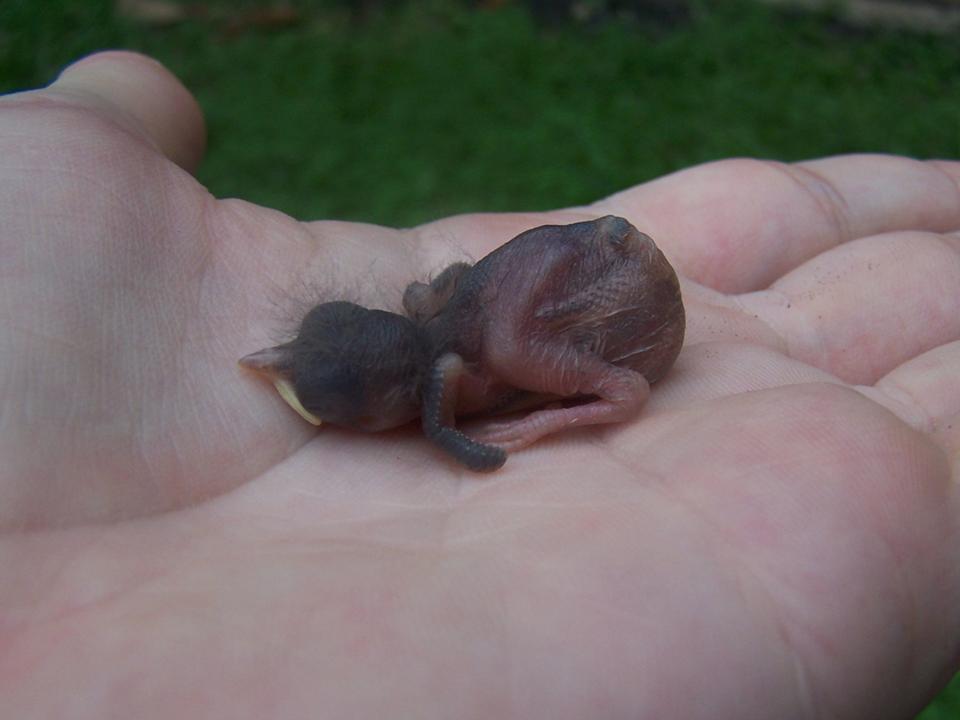
FIG 6: Chick on day 4 after hatching (Photo Paul Smith)
Day 4 / FIG 6: Eyes remain closed. Legs and wings stronger and able to clamber about more purposefully. Chicks raise their head to beg when nest is touched making barely audible "sip sip" calls. The head is held erect with bill wide open and slight side-sto-side head movements. Secondaries breaking skin, and wings and head almost entirely blackish. Other feather tracts much more extensive so skin is blacker overall, though none yet breaking skin. Alula is visible. Fecal sacs visible beneath skin near anus. Two chicks exuded fecal sacs when handled - usually they are removed by parents. Fecal sacs measured 13mm each. Measurements of smallest chick TL=37mm; T=9mm; W= 10.5mm; Wt=3.5g (n=1). Mean measurements of other three chicks TL=40.5mm; T=10.17mm; W=13mm; Wt=4.17g. (n=3).
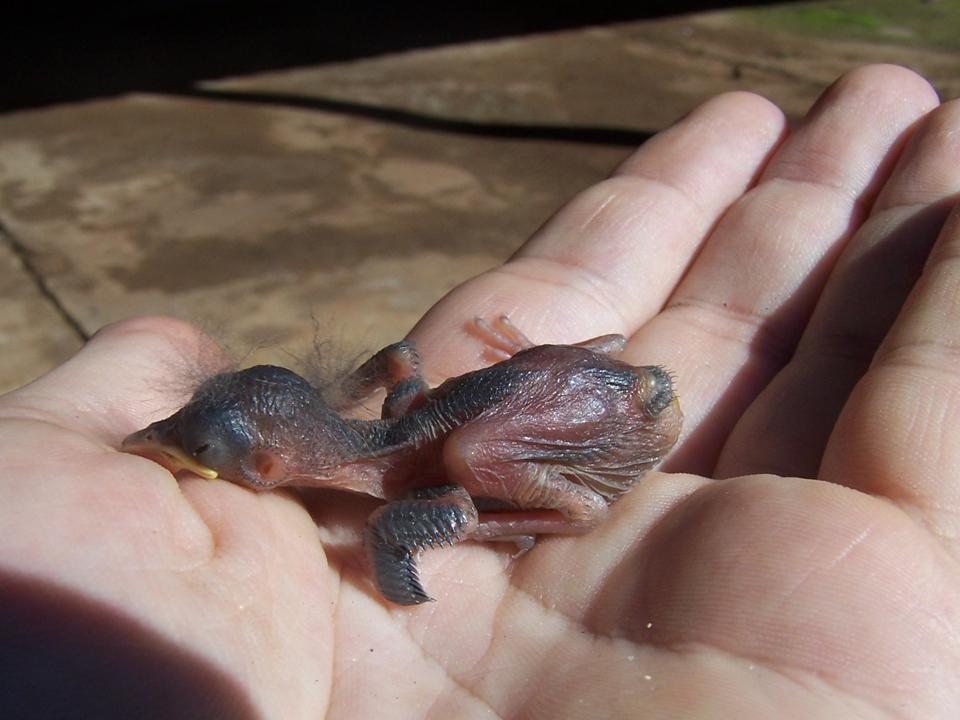
Day 5 / FIG 7: Eyes beginning to open, though remain swollen. Chicks still do not react to visual stimulus. Legs and wings strong and now adopts a more "typical" pose with neck and wings extended and legs folded under body. Scutes visible on legs. Chicks making louder, clearly audible cheeping noises, waving the head side to side when doing so. Tips of sheaths of all flight feathers now 2 or 3mm emergent, and tips of spinal, caudal and ventral tract and neck visible beneath skin. Three chicks exuded fecal sacs mean 12.66mm long (range 10-16mm). Measurements of smallest chick TL=41mm; T=10mm; W= 13mm; Wt=4g (n=1). Mean measurements of other three chicks TL=42.83mm; T=11.3mm; W=14.5mm; Wt=4.83g. (n=3).
FIG 7: Chick on day 5 after hatching (Photo Paul Smith)
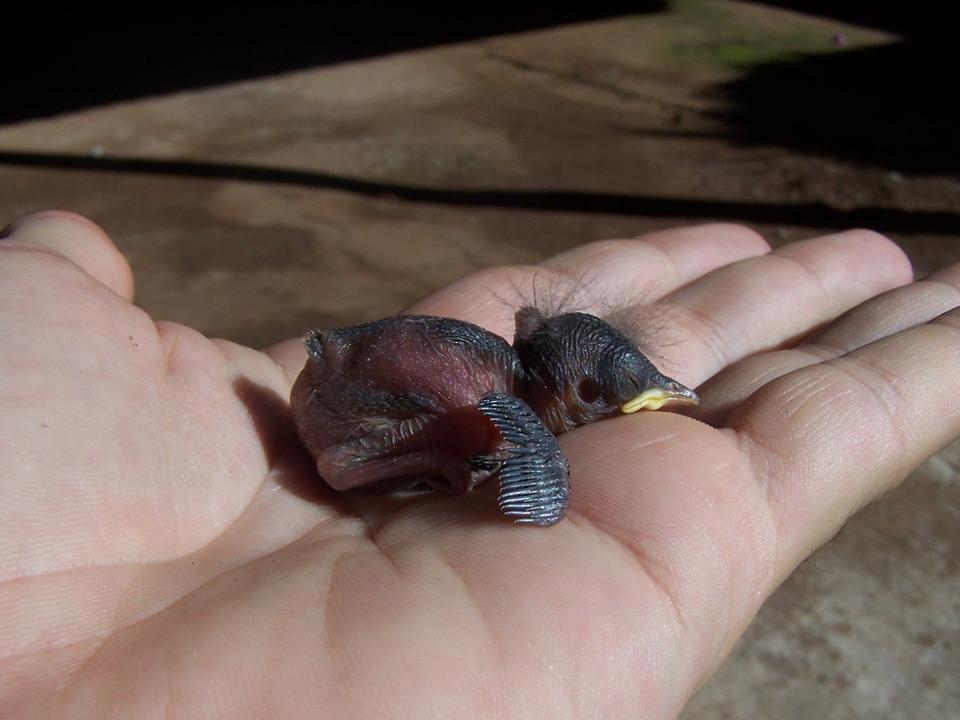
FIG 8: Chick on day 6 after hatching (Photo Paul Smith)
Day 6 / FIG 8: Eyes almost fully open but chicks still do not react to visual stimulus. Chicks are extremely active and do not remain still when handled, using wings and legs to clamber about. Legs long and strong, able to grasp with feet. Wings now well-developed, flight feather sheaths emergent by approximately 5mm (primaries more so than secondaries). Tips of sheaths of all tracts now also emerging through skin. Measurements of smallest chick TL=45mm; T=11mm; W= 13.5mm; Wt=5g (n=1). Mean measurements of other three chicks TL=46mm; T=13mm; W=15.3mm; Wt=6g. (n=3).
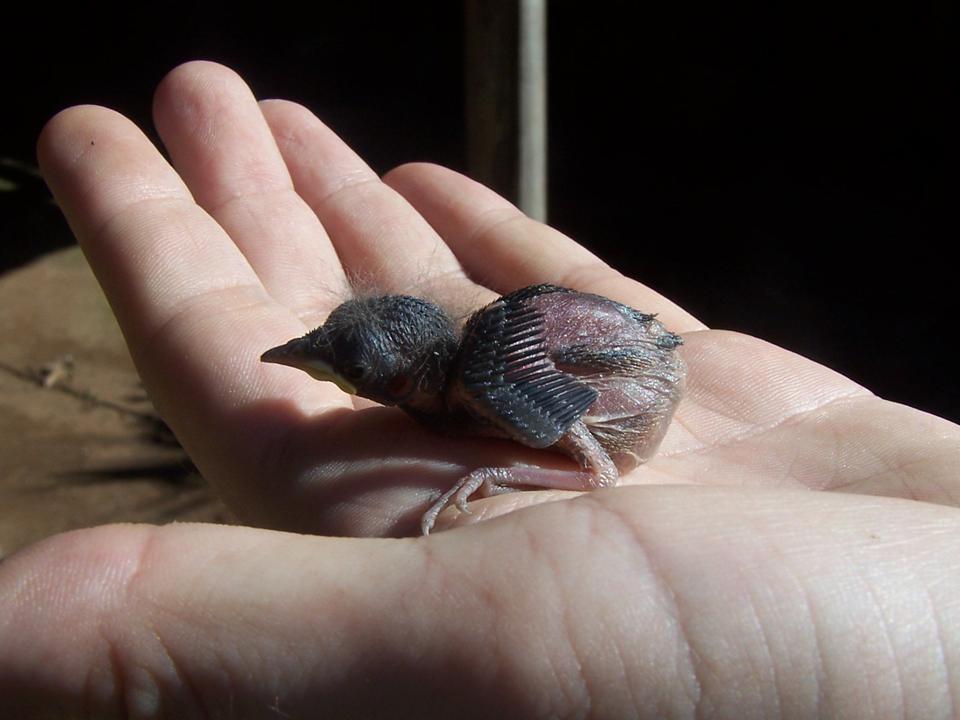
FIG 9: Chick on day 7 after hatching (Photo Paul Smith)
Day 7 / FIG 9: Eyes fully open and chicks react to visual stimulus. Chicks remain active, flapping wings when moving about. When paused they attempt to grasp with the feet and sustain head raised (not resting on hand as before). Flight feather sheaths emergent by approximately 6.5mm (primaries more so than secondaries). Tail feathers emergent by approximately 3mm. Extensive pale feather tips visible on underparts (not blackish like elsewhere). Measurements of smallest chick TL=46mm; T=13.5mm; W= 15mm; Wt=6g (n=1). Mean measurements of other three chicks TL=47.3mm; T=14.67mm; W=16.67mm; Wt=7.3g. (n=3).
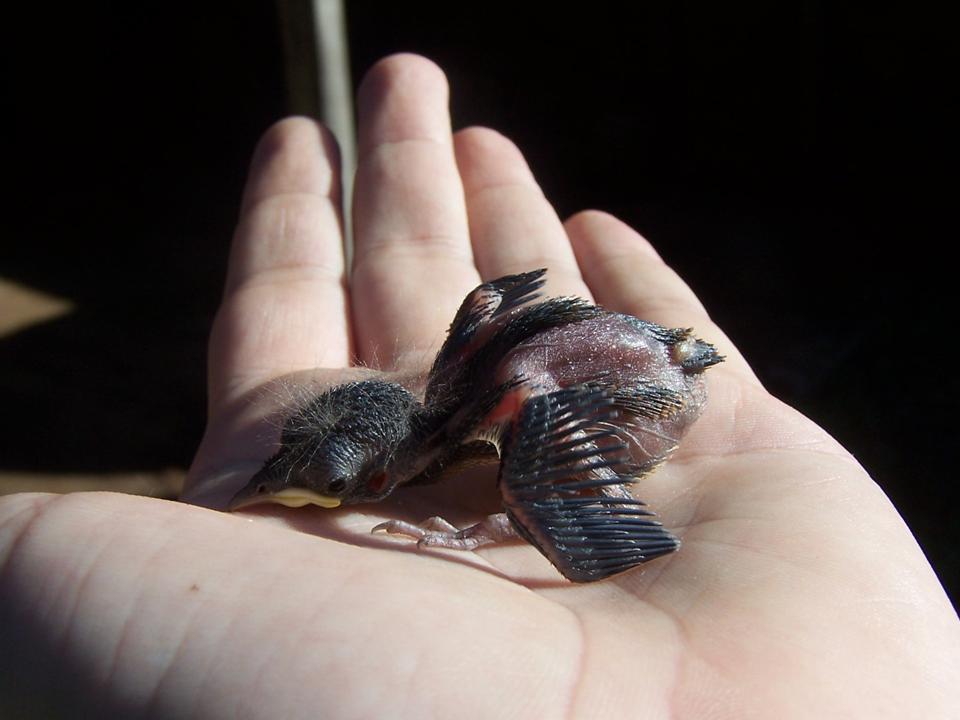
FIG 10: Chick on day 8 after hatching (Photo Paul Smith)
Day 8 / FIG 10: Two chicks clearly larger than others and two chicks clearly smaller, at least one day behind in development. Largest chick now with flight feathers >10mm long but still sheathed. Feathers of ventral, caudal and dorsal tracts are breaking their sheaths, brown feather tips visible (whitish on ventral tract). Able to walk clumsily but less randomly. Loud begging calls audible some distance from nest. Largest chick was found perched on nest side, smallest chick bottom of the pile. Measurements of two smallest chicks TL=49mm; T=14.5mm; W= 16mm; Wt=7g (n=2). Mean measurements of two largest chicks TL=50.5mm; T=16mm; W=18.5mm; Wt=8.25g. (n=2).
The nest was predated, probably by domestic cats somewhere between 5-9pm on Day 8. The increased vocalisation by young birds and vulnerable location of the nest probably contributed to its demise.
SUMMARY
The graph below shows the mean daily growth rate of the three largest chicks (Raw Data is presented in Table A below it). Weight increased exponentially at a level of approximately one gram per day, length increase was incremental at a mean rate of 2.94mm per day. The first feather tracts were visible on day 2 (the alar tract being the first to develop). The first feather sheaths to emerge from the skin were also on the alar tract on day 3. The eyes began to open on day 5 but were not fully open until day 7. The first feathers to break their sheaths were on the ventral and dorsal tracts (flanks) on day 8.
Weight (mg)
Length (mm)
Days after hatching
| CHICK |
MMENT |
DAY 1 |
DAY 2 |
DAY 3 |
DAY 4 |
DAY 5 |
DAY 6 |
DAY 7 |
DAY 8 |
| 1 |
TL |
NA |
NA |
33.5 |
37 |
41 |
45 |
46 |
48 |
| 2 |
TL |
NA |
NA |
38 |
40 |
43,5 |
45,5 |
47 |
50 |
| 3 |
TL |
NA |
NA |
38 |
41 |
43 |
46 |
46 |
51 |
| 4 |
TL |
27 |
32 |
37 |
40,5 |
42 |
46,5 |
49 |
50 |
| 1 |
Wt |
NA |
NA |
25 |
35 |
40 |
50 |
60 |
70 |
| 2 |
Wt |
NA |
NA |
30 |
40 |
45 |
60 |
70 |
70 |
| 3 |
Wt |
NA |
NA |
30 |
40 |
50 |
60 |
75 |
80 |
| 4 |
Wt |
10 |
20 |
35 |
45 |
50 |
60 |
75 |
85 |
| 1 |
Tarsus |
NA |
NA |
9 |
9 |
10 |
11 |
13,5 |
14 |
| 2 |
Tarsus |
NA |
NA |
9 |
10 |
11 |
13 |
14,5 |
15 |
| 3 |
Tarsus |
NA |
NA |
9,5 |
10,5 |
11 |
12 |
15,5 |
16 |
| 4 |
Tarsus |
NA |
8 |
11 |
11 |
12 |
13,5 |
14 |
16 |
| 1 |
Wing |
NA |
NA |
9 |
10,5 |
13 |
13,5 |
15 |
15,5 |
| 2 |
Wing |
NA |
NA |
10,5 |
13 |
15 |
16 |
16 |
16,5 |
| 3 |
Wing |
NA |
NA |
11,5 |
13,5 |
14,5 |
15 |
16.5 |
17 |
| 4 |
Wing |
NA |
9.5 |
10 |
12,5 |
14 |
15 |
17,5 |
20 |
TABLE A: Raw Measurement Data. All measurements given in millimetres, weights in milligrams. TL measurement taken in normal sitting position with neck withdrawn. Wing measurements is extended wing including forewing. Tarsus measurement taken according to international standards. Weights taken using a standard 30g Pessola balance and as such are approximate to the nearest 5mg. Chicks are numbered 1 to 4 according to size, 1 being the smallest and 4 the largest.
Designed by Paul Smith 2006. This website is copyrighted by law.
Material contained herewith may not be used without the prior written permission of FAUNA Paraguay.
Photographs on this web-site were taken by Paul Smith, Hemme Batjes, Regis Nossent,
Alberto Esquivel, Arne Lesterhuis, José Luis Cartes, Rebecca Zarza and Hugo del Castillo and are used with their permission.












